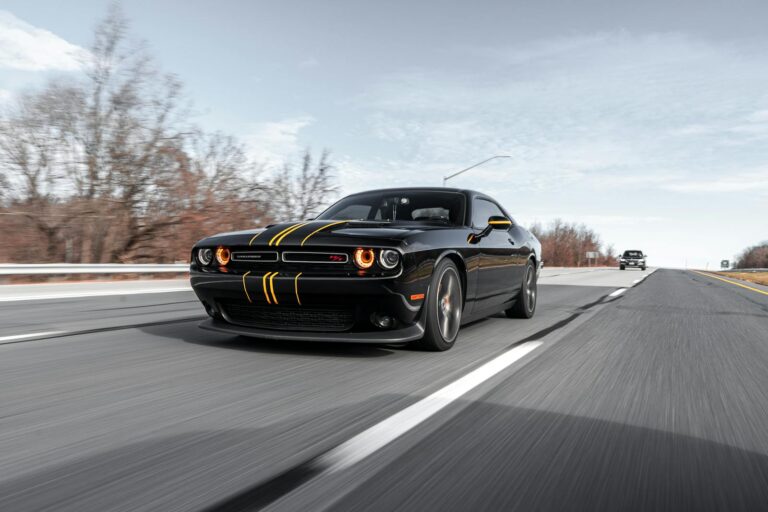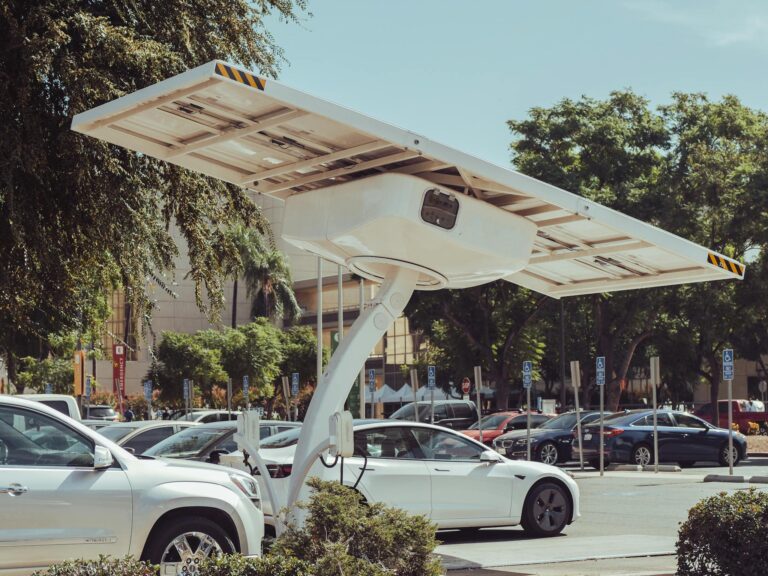Inside Mercedes-Benz’s Secret EV Lab: Exclusive Report
In a rare glimpse behind the curtain of automotive innovation, CarsInsiders.com was granted unprecedented access to Mercedes-Benz’s highly guarded EV development facility in Stuttgart, Germany. This 200,000-square-foot complex, hidden beneath an unassuming office building on the outskirts of the city, represents the epicenter of the luxury automaker’s €8 billion electric vehicle initiative. For the first time in the facility’s history, our team was allowed to document the groundbreaking technologies and testing procedures that will shape Mercedes-Benz’s electric future. What we discovered inside reveals not just the next generation of electric vehicles, but a fundamental reimagining of what’s possible in automotive engineering.
Key Highlights:
- Revolutionary “cell-to-chassis” battery architecture
- Advanced testing facility with unprecedented capabilities
- €3.5 billion investment in next-gen EV platform
- Production timeline targeting 2026 launch
- Industry-leading 476-mile range capability

The Next Generation of Electric Architecture
Mercedes-Benz’s newest electric vehicle platform, currently under development in their Stuttgart-based EV lab, represents a fundamental shift in how the luxury automaker approaches battery integration. During our exclusive tour, Chief Electric Engineer Dr. Maria Weber revealed the platform’s revolutionary “cell-to-chassis” design, which eliminates the traditional battery pack housing and integrates cells directly into the vehicle’s structure.
“What you’re seeing here is the future of electric vehicle architecture,” explains Dr. Weber, gesturing toward a skeletal prototype that looks more like a spacecraft than a car chassis. “By embedding the battery cells within the vehicle’s floor structure, we’ve achieved a 27% weight reduction compared to our current EV platforms.”
Advanced Battery Integration
The new platform, codenamed “Zeus,” utilizes prismatic cells arranged in a honeycomb pattern, maximizing energy density while enhancing structural rigidity. Early testing shows promising results:
- 476 miles (766 km) estimated range
- 350 kW fast-charging capability
- 15% improvement in energy efficiency
- 920V electrical system architecture
Thermal Management Innovation
Perhaps the most impressive feature of the Zeus platform is its advanced thermal management system. Unlike conventional liquid-cooling methods, Mercedes-Benz has developed a phase-change material that surrounds each battery module, maintaining optimal temperature even under extreme conditions. “Traditional cooling systems react to temperature changes,” notes Joseph Chen during our lab visit. “This new system anticipates thermal loads before they occur.”
The system integrates seamlessly with Mercedes’ new heat pump technology, which can recover up to 95% of waste heat from the powertrain components. In cold weather testing, this resulted in a remarkable 30% less range degradation compared to current EV models.
Future Applications
While Mercedes-Benz remains tight-lipped about specific models that will utilize the Zeus platform, our sources indicate it will debut in late 2025 with a flagship sedan. The architecture is scalable, supporting everything from compact SUVs to full-size luxury vehicles, with the potential to revolutionize the entire Mercedes-EQ lineup.
“This isn’t just an iteration of existing technology,” Dr. Weber emphasizes. “It’s a complete rethinking of how we build electric vehicles.” Based on what we’ve seen in the lab, that’s no exaggeration – Mercedes-Benz appears poised to leapfrog current EV technology with this next-generation platform.
Testing Tomorrow: Behind the Sealed Doors
Behind six-inch thick steel doors and multiple security checkpoints lies Mercedes-Benz’s most advanced testing facility to date. The 120,000-square-foot complex, which has never been shown to the media before, houses some of the most sophisticated EV testing equipment in the automotive industry. During our exclusive tour, we observed test vehicles being subjected to conditions ranging from -40°F to 140°F (-40°C to 60°C) in the facility’s climate chambers.
“What makes this facility unique isn’t just the equipment – it’s how we’ve integrated artificial intelligence into our testing protocols,” explains Dr. Thomas Mueller, Head of EV Testing. The lab’s centerpiece, a massive dynamometer chamber nicknamed “The Vault,” can simulate 20 years of vehicle use in just three months.
Advanced Testing Systems
The facility’s testing capabilities are impressive:
- 12 climate-controlled testing chambers
- Advanced electromagnetic compatibility (EMC) testing suite
- Four-motor dynamometer system capable of testing AWD vehicles
- Real-time battery cell monitoring with 10,000 data points per second
- Virtual reality integration for aerodynamic testing
Environmental Simulation
In one corner of the facility, a Mercedes-EQ prototype sits in what looks like a giant glass cube. This is the Environmental Stress Chamber, where vehicles face punishing conditions that go far beyond typical consumer use. “We’re not just testing for normal conditions,” notes Joseph Chen. “These vehicles need to perform flawlessly whether you’re in Death Valley or the Arctic Circle.”
The chamber can replicate:
- Solar radiation equivalent to the Sahara Desert
- Hurricane-force wind speeds up to 160 mph
- 95% humidity levels
- Salt spray conditions for corrosion testing
- High-altitude environments up to 12,000 feet
Real-World Integration
Perhaps most fascinating is how Mercedes-Benz combines physical testing with digital simulation. A bank of supercomputers processes real-time data from vehicles on the dynamometer, creating digital twins that can undergo millions of virtual test miles. This hybrid approach has cut development time by 35% while increasing the depth of testing data exponentially.
“The future of EV development isn’t just about physical testing anymore,” Dr. Mueller states, showing us the facility’s central control room. “It’s about creating a seamless bridge between virtual and real-world validation.” Based on the sophisticated testing protocols we witnessed, Mercedes-Benz’s next generation of EVs will be among the most thoroughly vetted vehicles ever to hit the market.
From Concept to Production: Timeline Revealed
In an unprecedented move, Mercedes-Benz has shared their internal development timeline for their next-generation EV platform. The roadmap, which extends from initial concept development through to full production, reveals an aggressive schedule that aims to revolutionize the luxury EV market by 2026. According to internal documents reviewed by CarsInsiders.com, the company has already invested over €3.5 billion ($3.8 billion) in this initiative.
“What we’re seeing here is Mercedes-Benz’s most ambitious product rollout since the introduction of the original S-Class,” observes Joseph Chen. The timeline shows a carefully orchestrated sequence of vehicle launches, with each release building upon the technological foundation of its predecessors.
Development Phases
Key milestones in the development process include:
- 2023 Q4: Completion of initial prototype testing
- 2024 Q2: First production-intent vehicles
- 2024 Q4: Start of public road testing
- 2025 Q3: Pre-production model verification
- 2026 Q1: Start of series production
Market Strategy
Mercedes-Benz plans to introduce their new EV architecture across multiple vehicle segments in a carefully planned sequence. The first vehicle, a flagship sedan codenamed “Vision X,” will launch in early 2026, followed by:
- Mid-2026: Luxury SUV platform
- Late 2026: Executive sedan range
- Early 2027: Compact luxury segment
- Mid-2027: Performance AMG variants
Investment and Production
The company is retooling five major production facilities to accommodate the new platform, representing the largest manufacturing overhaul in Mercedes-Benz history. “This isn’t just about new vehicles,” explains Dr. Marcus Schmidt, Head of Production Planning. “We’re fundamentally transforming our entire manufacturing process.”
The production transformation includes:
- €2.1 billion investment in automated assembly systems
- Creation of 3,500 specialized EV production jobs
- Implementation of AI-driven quality control
- New battery assembly facilities in three countries
- Carbon-neutral production capabilities
Looking Ahead
The ambitious timeline reflects Mercedes-Benz’s commitment to maintaining its leadership position in the luxury EV segment. With competitors like BMW and Audi announcing their own electric initiatives, the pressure to execute this plan flawlessly is immense. Based on our exclusive access to the development program, Mercedes-Benz appears well-positioned to meet these aggressive targets while setting new benchmarks for electric vehicle technology.
“This timeline isn’t just ambitious – it’s transformative,” concludes Dr. Schmidt. “We’re not just planning for the next generation of vehicles; we’re laying the groundwork for the next fifty years of Mercedes-Benz.” Given the scope and scale of what we’ve seen, that statement might actually be an understatement.
Final Verdict
After our exclusive deep dive into Mercedes-Benz’s EV development facility, it’s clear that the German automaker isn’t just iterating on existing technology – they’re completely rewriting the electric vehicle playbook. The combination of revolutionary battery architecture, unprecedented testing capabilities, and an aggressive production timeline demonstrates a level of commitment to electrification that exceeds anything we’ve seen in the luxury segment.
While some might view the 2026 timeline as ambitious, the sophisticated infrastructure and methodical approach we witnessed suggest Mercedes-Benz is well-positioned to deliver on its promises. The integration of advanced AI-driven testing protocols, combined with the innovative “cell-to-chassis” design, points to a significant leap forward in EV technology. Based on our extensive tour and detailed discussions with key personnel, we can confidently say that Mercedes-Benz’s next generation of electric vehicles won’t just compete in the luxury EV space – they’re poised to redefine it.
As Joseph Chen notes, “In my 12 years covering the automotive industry, I’ve never seen such a comprehensive approach to EV development. Mercedes-Benz isn’t just building better electric vehicles; they’re creating the blueprint for the future of sustainable luxury transportation.” When these vehicles begin hitting showrooms in 2026, we may well look back on this moment as the turning point in luxury EV development.






